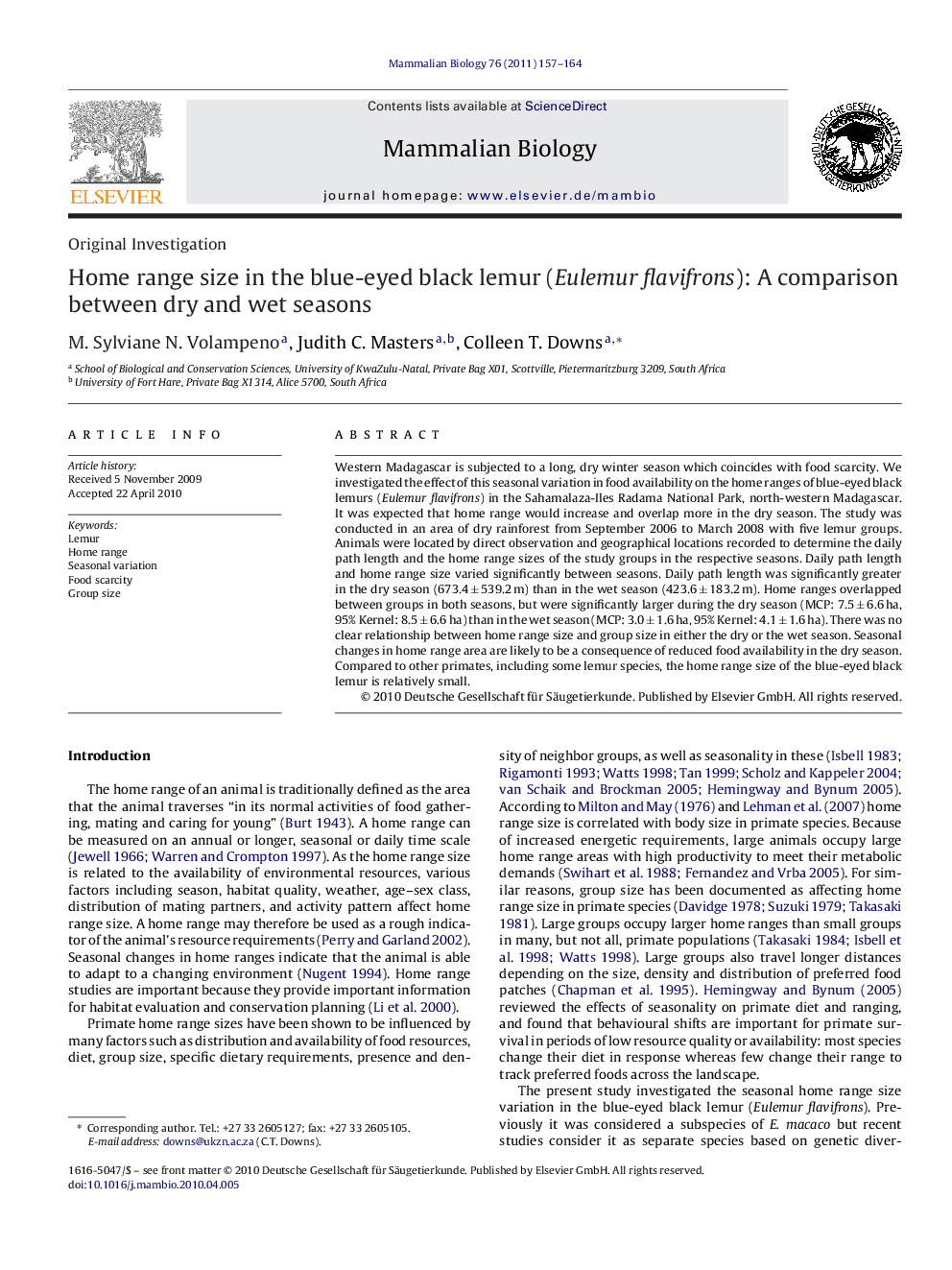| Article ID | Journal | Published Year | Pages | File Type |
|---|---|---|---|---|
| 2194125 | Mammalian Biology - Zeitschrift für Säugetierkunde | 2011 | 8 Pages |
Western Madagascar is subjected to a long, dry winter season which coincides with food scarcity. We investigated the effect of this seasonal variation in food availability on the home ranges of blue-eyed black lemurs (Eulemur flavifrons) in the Sahamalaza-Iles Radama National Park, north-western Madagascar. It was expected that home range would increase and overlap more in the dry season. The study was conducted in an area of dry rainforest from September 2006 to March 2008 with five lemur groups. Animals were located by direct observation and geographical locations recorded to determine the daily path length and the home range sizes of the study groups in the respective seasons. Daily path length and home range size varied significantly between seasons. Daily path length was significantly greater in the dry season (673.4 ± 539.2 m) than in the wet season (423.6 ± 183.2 m). Home ranges overlapped between groups in both seasons, but were significantly larger during the dry season (MCP: 7.5 ± 6.6 ha, 95% Kernel: 8.5 ± 6.6 ha) than in the wet season (MCP: 3.0 ± 1.6 ha, 95% Kernel: 4.1 ± 1.6 ha). There was no clear relationship between home range size and group size in either the dry or the wet season. Seasonal changes in home range area are likely to be a consequence of reduced food availability in the dry season. Compared to other primates, including some lemur species, the home range size of the blue-eyed black lemur is relatively small.
